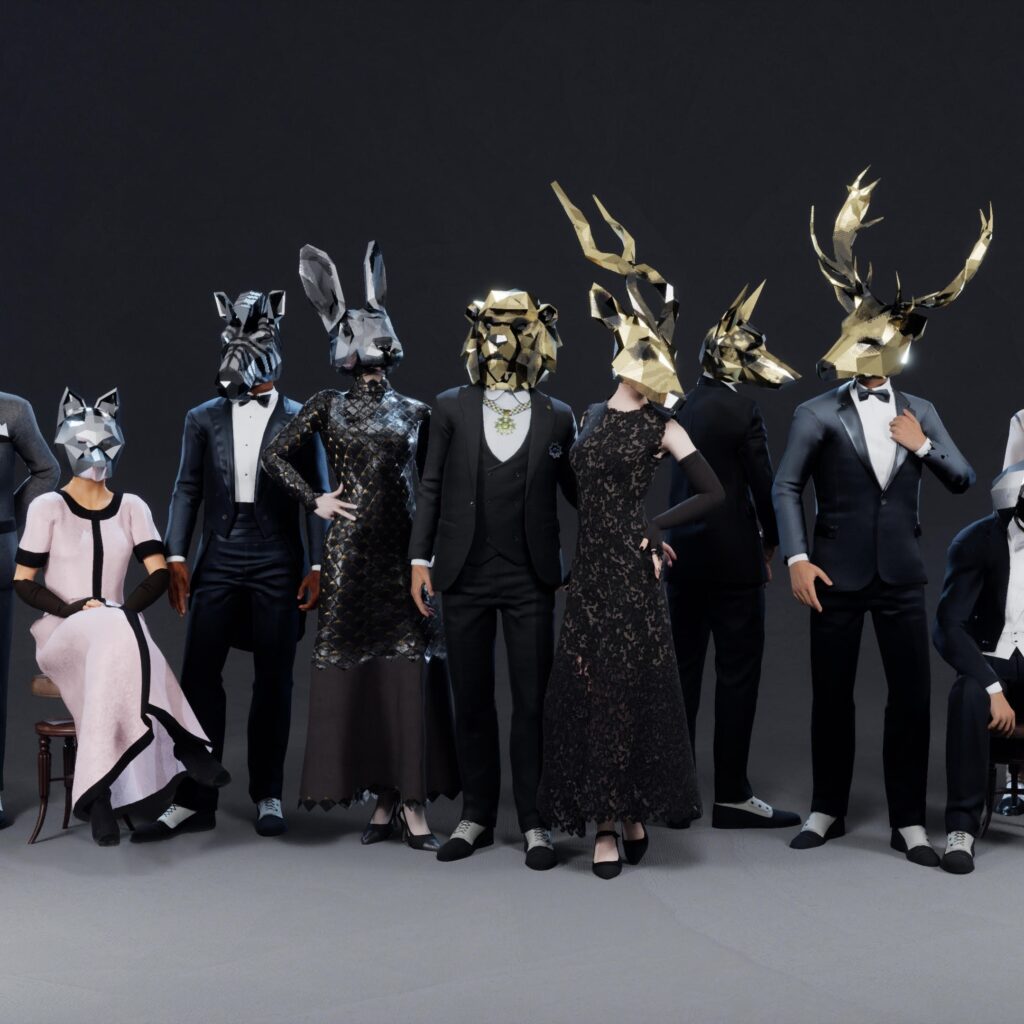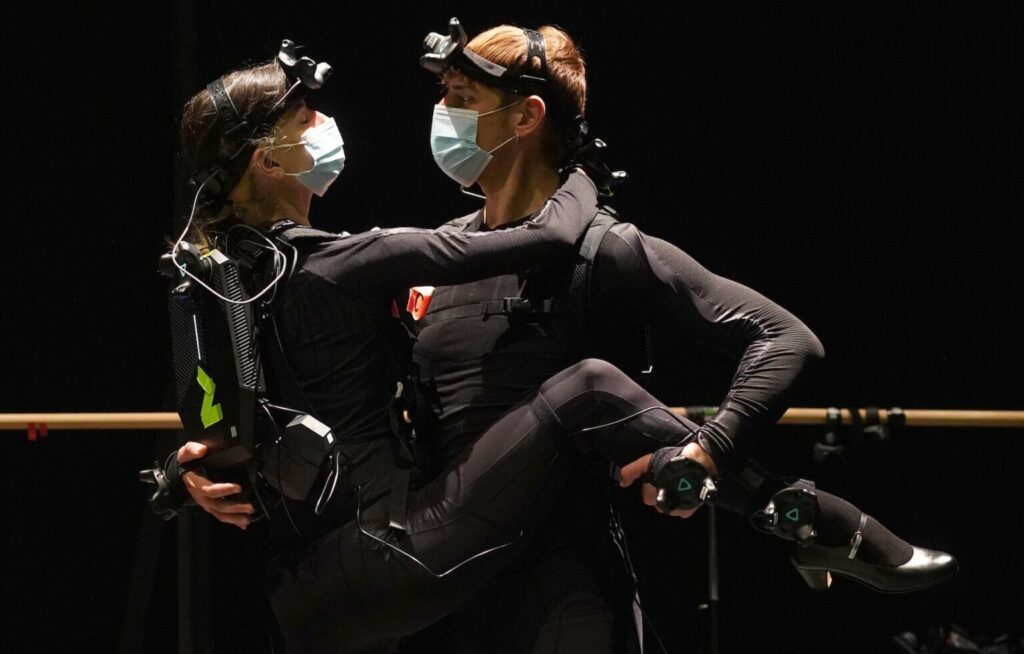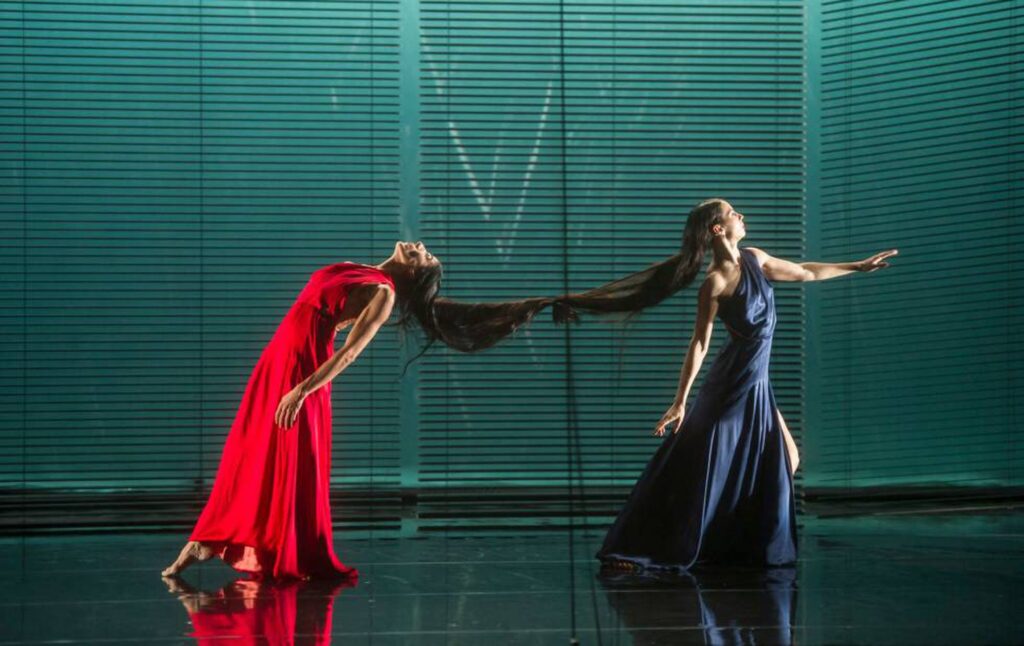

Spanish choreographer, director, dancer and actress Blanca Li invites the Venetian public to a unique, extraordinary immersive experience, which can be experienced every day of the Festival at Ca’ Giustinian.
A past winner of the Golden Lion Award at the 2021 Venice Film Festival for her VR project, Spanish choreographer, director, dancer, and actress Blanca Li will participate in the 16th Venice Dance Biennale with Le bal de Paris, a unique immersive experience that is open every day at Ca’ Giustinian from noon to 6pm.
A fashionista, Blanca Li partnered with Chanel for her project, after creating for the fashion house an exclusive virtual collection that will be worn by both the performers on stage and by participating audience, who will be able to choose among the several offered, in unmistakable Chanel style. The show features Adèle, a young, independent, dynamic woman, who travels back to Paris after seeing the world. At the masked ball her family hold in her honour, Adèle meets her first love, Pierre. Visitors will don VR helmets and find themselves in the ballroom, accompanied by the two protagonists. The evening goes on in a mysterious, lush garden after a train and boat ride. Blanca Li created an unreal, timeless, retro, futuristic, classical, modern, dazzling universe. Don’t miss it!

Dance beyond dance
Dance is universal, and it can combine and mix naturally with any other art – music first, obviously, but also sculpture, literature, cinema, theatre. All arts can accompany dance and, conversely, dance can accompany any other. Dance uses a single instrument, the human body, and a distinct feature, motion, which gives it the strength to mix with other arts while never losing its own identity.
All arts can accompany dance and, conversely, dance can accompany any other
Mixed genres for a universal language of dance
I love to innovate and knowing that I am creating something new and original, something that couldn’t exist before, means the world to me. That’s why I love technology, because it gives me the ability to invent new ways to live dance. At the same time, I also love to work with dance by integrating it with other forms of art to give it different shapes, and to combine different dance genres together. Dance has the ability to renovate constantly and create new styles. Urban dance, as an example, has been particularly fertile over the last few decades and contributed greatly to the creation of new genres. I work with dancers who learned on the street and who expanded their art vocabulary to include contemporary dance with great success. I also work with classical dancers, very open-minded performers, who learned new techniques and practices from the hip-hop repertoire, thus enriching their expressive potential. This is a positive evolution that I support strongly and that inspires me strongly, as well. In my creations, I want every performer to meet their ideal conditions to interpret their role. I customize all choreographies for each dancer in a process of constant discovery, a dynamic, stimulating research activity that is also fun!
In my creations, I want every performer to meet their ideal conditions to interpret their role. I customize all choreographies for each dancer in a process of constant discovery
From the Venice Film Festival to the Venice Dance Biennale
What I appreciate the most of festivals is their being extraordinary places of exchange between artists of different cultural background and different approach to expressive languages. This will make the audience discover the richness and the diversity of works that cross the borders that still separate different modes of expression. Festivals also offer winning pieces an opportunity of recognition at an international level, which is essential for distribution. It is so exciting to be awarded a prize at a festival, because in general, it comes after years of work and effort. This recognition means love, and emotion. I must say that last year in Venice was my first time winning a prize at a large cinema festival. Maybe cinema understood the importance of awarding pieces that exist outside of canon, which is a clear message for the world of art, still too compartmentalized inside arbitrary borders.

The role of the audience
One thing that always fascinated me was the possibility to share dance with the largest possible audience, and I am always looking for new ways to make dance accessible. Also, using technology allowed me to integrate a large audience that wouldn’t ordinarily be interested in a dance show. I like to think that each spectator is a participant. The idea of them dancing is essential for me, which is way I work with immersive and interactive media. When I create something new, I almost never think of the audience, but it does excite me when the piece finally meets the audience, the exact moment when I can see their different reactions is fascinating, it is a unique experience. Le bal de Paris elicits different reactions in the public. I am learning a lot from this piece, and the diversity of reactions among spectators surprises me. It is all very exciting.

Writing the piece
It all originated when 360-degree immersive films came out. TV channel ARTE asked me to make a short movie about dance using this technology. This was ten years ago, and at the time, it enjoyed moderate success in what were very few places where one could experiment it. I wanted to go further, though, because while spectators were at the centre of the dance piece, they still have no active role in it. My goal was to produce a show where the spectator was one of the characters, and could experience other dancers in flesh and blood. I began working on Le bal de Paris four years ago, in early 2018. It proved hard to finance a show such as this and to convince co-producers that it was actually feasible. I was able to secure the last funds only during the pandemic, three years after I started. Then it took a year to pick the studio that would allow us to put technology at the centre of my project, and it took months to provide a proof of concept to potential co-producers. 3D animation took two years. After that, we recorded music and dialogues in five languages. We produced a first version, which we presented on Christmas 2020 in Madrid. After ironing out a few glitches, we were ready to present it at the 2021 Venice Film Festival. It came out beautifully and exactly as I envisioned it. It is the only show of its genre.
My goal was to produce a show where the spectator was one of the characters, and could experience other dancers in flesh and blood
A co-dancer of choice
I was lucky to dance a pas de deux with flamenco star Andrés Marín for my show Poeta en Nueva York (2007). We danced together over a hundred times. Then, I decided to create a second pas de deux with a star of classical ballet, Maria Alexandrovna of the Bolshoi Ballet, for Diosa y Demonias (2017). This was also an incredible experience: both of us felt at our highest in interpretative ability. Our tour finale was at the New York City Center. This year, I am looking forward to a paso a dos with Biennale director Wayne McGregor! Why not?